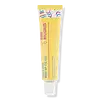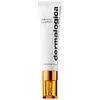What's inside
What's inside
 Key Ingredients
Key Ingredients

 Benefits
Benefits

 Concerns
Concerns

No concerns
 Ingredients Side-by-side
Ingredients Side-by-side

Water
Skin ConditioningPropanediol
SolventButylene Glycol
HumectantGlycerin
Humectant1,2-Hexanediol
Skin ConditioningSodium Polyacryloyldimethyl Taurate
Emulsion StabilisingCetyl Ethylhexanoate
EmollientCorn Starch Modified
AbsorbentIlex Paraguariensis Leaf Extract
PerfumingCetearyl Olivate
Sorbitan Olivate
EmulsifyingPanthenol
Skin ConditioningAllantoin
Skin ConditioningAdenosine
Skin ConditioningTocopherol
AntioxidantHelianthus Annuus Seed Oil
EmollientHydrolyzed Hyaluronic Acid
HumectantSodium Hyaluronate
HumectantHyaluronic Acid
HumectantCaffeine
Skin ConditioningAcetyl Tetrapeptide-5
HumectantCichorium Intybus Root Extract
MaskingWater, Propanediol, Butylene Glycol, Glycerin, 1,2-Hexanediol, Sodium Polyacryloyldimethyl Taurate, Cetyl Ethylhexanoate, Corn Starch Modified, Ilex Paraguariensis Leaf Extract, Cetearyl Olivate, Sorbitan Olivate, Panthenol, Allantoin, Adenosine, Tocopherol, Helianthus Annuus Seed Oil, Hydrolyzed Hyaluronic Acid, Sodium Hyaluronate, Hyaluronic Acid, Caffeine, Acetyl Tetrapeptide-5, Cichorium Intybus Root Extract
Water
Skin ConditioningButylene Glycol
HumectantPropanediol
SolventGlycerin
HumectantC15-19 Alkane
SolventSalvia Hispanica Seed Oil
MoisturisingSodium PCA
HumectantTrehalose
HumectantPoria Cocos Polysaccharide
Skin ConditioningPapain
Skin ConditioningDunaliella Salina Extract
Skin ConditioningAminopropyl Ascorbyl Phosphate
AntioxidantTerminalia Arjuna Extract
Skin ConditioningTremella Fuciformis Sporocarp Extract
AntioxidantAscorbyl Methylsilanol Pectinate
AntioxidantPalmitoyl Tripeptide-5
Skin ConditioningSodium Hyaluronate
HumectantPhytosterols
Skin ConditioningAlgin
MaskingCitrus Grandis Peel Oil
MaskingPhytosteryl Oleate
Skin ConditioningTocopherol
AntioxidantSerine
MaskingOleic Acid
EmollientInositol
HumectantHelianthus Annuus Seed Oil
EmollientBetaine
HumectantCarrageenan
Panthenol
Skin ConditioningDipotassium Glycyrrhizate
HumectantMethylpropanediol
SolventProline
Skin ConditioningXylitol
HumectantCalcium Gluconate
HumectantPantolactone
HumectantLecithin
EmollientXanthan Gum
EmulsifyingPentylene Glycol
Skin ConditioningAminomethyl Propanol
BufferingCaprylyl Glycol
EmollientPolyacrylate-13
Acrylates/C10-30 Alkyl Acrylate Crosspolymer
Emulsion StabilisingTetrasodium Glutamate Diacetate
Polyisobutene
Ethylhexylglycerin
Skin ConditioningSodium Benzoate
MaskingCitric Acid
BufferingGluconolactone
Skin ConditioningPolysorbate 20
EmulsifyingPotassium Sorbate
PreservativeCarbomer
Emulsion Stabilising1,2-Hexanediol
Skin ConditioningSodium Hydroxide
BufferingLimonene
PerfumingPhenoxyethanol
PreservativeWater, Butylene Glycol, Propanediol, Glycerin, C15-19 Alkane, Salvia Hispanica Seed Oil, Sodium PCA, Trehalose, Poria Cocos Polysaccharide, Papain, Dunaliella Salina Extract, Aminopropyl Ascorbyl Phosphate, Terminalia Arjuna Extract, Tremella Fuciformis Sporocarp Extract, Ascorbyl Methylsilanol Pectinate, Palmitoyl Tripeptide-5, Sodium Hyaluronate, Phytosterols, Algin, Citrus Grandis Peel Oil, Phytosteryl Oleate, Tocopherol, Serine, Oleic Acid, Inositol, Helianthus Annuus Seed Oil, Betaine, Carrageenan, Panthenol, Dipotassium Glycyrrhizate, Methylpropanediol, Proline, Xylitol, Calcium Gluconate, Pantolactone, Lecithin, Xanthan Gum, Pentylene Glycol, Aminomethyl Propanol, Caprylyl Glycol, Polyacrylate-13, Acrylates/C10-30 Alkyl Acrylate Crosspolymer, Tetrasodium Glutamate Diacetate, Polyisobutene, Ethylhexylglycerin, Sodium Benzoate, Citric Acid, Gluconolactone, Polysorbate 20, Potassium Sorbate, Carbomer, 1,2-Hexanediol, Sodium Hydroxide, Limonene, Phenoxyethanol
 Reviews
Reviews

Ingredients Explained
These ingredients are found in both products.
Ingredients higher up in an ingredient list are typically present in a larger amount.
1,2-Hexanediol is a synthetic liquid and another multi-functional powerhouse.
It is a:
- Humectant, drawing moisture into the skin
- Emollient, helping to soften skin
- Solvent, dispersing and stabilizing formulas
- Preservative booster, enhancing the antimicrobial activity of other preservatives
Butylene Glycol (or BG) is used within cosmetic products for a few different reasons:
Overall, Butylene Glycol is a safe and well-rounded ingredient that works well with other ingredients.
Though this ingredient works well with most skin types, some people with sensitive skin may experience a reaction such as allergic rashes, closed comedones, or itchiness.
Learn more about Butylene GlycolGlycerin is already naturally found in your skin. It helps moisturize and protect your skin.
A study from 2016 found glycerin to be more effective as a humectant than AHAs and hyaluronic acid.
As a humectant, it helps the skin stay hydrated by pulling moisture to your skin. The low molecular weight of glycerin allows it to pull moisture into the deeper layers of your skin.
Hydrated skin improves your skin barrier; Your skin barrier helps protect against irritants and bacteria.
Glycerin has also been found to have antimicrobial and antiviral properties. Due to these properties, glycerin is often used in wound and burn treatments.
In cosmetics, glycerin is usually derived from plants such as soybean or palm. However, it can also be sourced from animals, such as tallow or animal fat.
This ingredient is organic, colorless, odorless, and non-toxic.
Glycerin is the name for this ingredient in American English. British English uses Glycerol/Glycerine.
Learn more about GlycerinHelianthus Annuus Seed Oil is the oil derived from the seeds of a Sunflower. Sunflower seed oil is non-fragrant. It is an emollient, meaning it helps to soften the skin.
Sunflower seed oil contains many fatty acids. The fatty acids found in sunflower seeds include (from highest amount to least): linoleic acid, myristic acid, palmitic acid, stearic acid, arachidic acid, oleic acid, and linolenic acid.
These fatty acids help the skin create ceramides. Ceramides play a role in repairing the skin barrier.
Helianthus Annuus Seed Oil helps moisturize the skin. This in turn helps the skin look more rejuvenated and smoother.
Sunflowers are rich in vitamin E.
Historians believe Indigenous cultures of North America domesticated sunflowers before corn. Thus they relied on sunflower oil for a variety of uses. One such use is moisturizing skin and hair.
Sunflower seed oil may not be fungal acne safe. We recommend speaking with a professional if you have any concerns.
Learn more about Helianthus Annuus Seed OilPanthenol is a common ingredient that helps hydrate and soothe the skin. It is found naturally in our skin and hair.
There are two forms of panthenol: D and L.
D-panthenol is also known as dexpanthenol. Most cosmetics use dexpanthenol or a mixture of D and L-panthenol.
Panthenol is famous due to its ability to go deeper into the skin's layers. Using this ingredient has numerous pros (and no cons):
Like hyaluronic acid, panthenol is a humectant. Humectants are able to bind and hold large amounts of water to keep skin hydrated.
This ingredient works well for wound healing. It works by increasing tissue in the wound and helps close open wounds.
Once oxidized, panthenol converts to pantothenic acid. Panthothenic acid is found in all living cells.
This ingredient is also referred to as pro-vitamin B5.
Learn more about PanthenolPropanediol is an all-star ingredient. It softens, hydrates, and smooths the skin.
It’s often used to:
Propanediol is not likely to cause sensitivity and considered safe to use. It is derived from corn or petroleum with a clear color and no scent.
Learn more about PropanediolSodium Hyaluronate is hyaluronic acid's salt form. It is commonly derived from the sodium salt of hyaluronic acid.
Like hyaluronic acid, it is great at holding water and acts as a humectant. This makes it a great skin hydrating ingredient.
Sodium Hyaluronate is naturally occurring in our bodies and is mostly found in eye fluid and joints.
These are some other common types of Hyaluronic Acid:
Learn more about Sodium HyaluronateTocopherol (also known as Vitamin E) is a common antioxidant used to help protect the skin from free-radicals and strengthen the skin barrier. It's also fat soluble - this means our skin is great at absorbing it.
Vitamin E also helps keep your natural skin lipids healthy. Your lipid skin barrier naturally consists of lipids, ceramides, and fatty acids. Vitamin E offers extra protection for your skin’s lipid barrier, keeping your skin healthy and nourished.
Another benefit is a bit of UV protection. Vitamin E helps reduce the damage caused by UVB rays. (It should not replace your sunscreen). Combining it with Vitamin C can decrease sunburned cells and hyperpigmentation after UV exposure.
You might have noticed Vitamin E + C often paired together. This is because it is great at stabilizing Vitamin C. Using the two together helps increase the effectiveness of both ingredients.
There are often claims that Vitamin E can reduce/prevent scarring, but these claims haven't been confirmed by scientific research.
Learn more about TocopherolWater. It's the most common cosmetic ingredient of all. You'll usually see it at the top of ingredient lists, meaning that it makes up the largest part of the product.
So why is it so popular? Water most often acts as a solvent - this means that it helps dissolve other ingredients into the formulation.
You'll also recognize water as that liquid we all need to stay alive. If you see this, drink a glass of water. Stay hydrated!
Learn more about Water